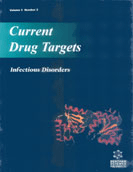Abstract
Fragment-based lead discovery is a recent approach in which much lower molecular weight compounds are screened relative to those in high throughput screening campaigns. In theory, fragment-based methods offer the possibility of identifying novel leads with improved affinity, selectivity, and pharmaceutical properties, and the rationale behind these fragment-based strategies makes intuitive sense. However, fragment-based hits are typically weak inhibitors/binders (IC50/Kd ~ μM-mM range), and therefore need to be screened at higher concentrations using very sensitive detection techniques. Although fragment hits are simpler, less functionalized compounds with correspondingly lower potencies, they typically possess high 'ligand efficiency' and so are highly suitable for optimization into clinical candidates with good drug-like properties. Nevertheless, elaborating, linking or exploring weakbinding fragments into high-affinity binders can be challenging and fragmentbased lead discovery can be difficult in practice. Both the discovery of fragment hits and how to advance or link them are areas of intense research. This paper discusses the concepts of fragment-based lead discovery, the design of fragment-based screening libraries, various screening techniques utilized in this approach, and a choice of specific examples which illustrate diverse approaches to fragment-based lead discovery.






















